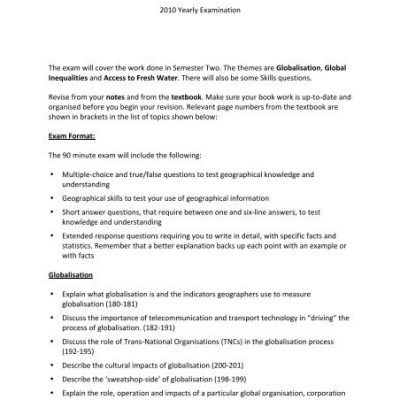Share this:
SUSTAINABLE USE OF POWER AND ENERGY RESOURCES
Power
Is the rate of doing work. It is equivalent to the amount of energy per unit time. We can therefore say that energy produces power and power is then used to carry out activity.
e used up cannot be replaced. Examples are
- Coal
- Petroleum
- Natural gas
- Fuel wood
- And nuclear resources
- Hydro electric power
- Tidal energy
- Solar energy
- Wind
- Geothermal power
- And bio-gas/biomass
- Solar energy
- And wind energy
(i) Non renewable energy source
- Is a black or brown rock which consists mainly of carbon
- It supplies energy after being burnt
- It is used in different ways in the world
- The countries in which coal is mined include
- It is used for generating electricity, heating, cooking and producing gas, cosmetics, adhesive, fertilizers, dyes, perfumes and synthetic fibers
- It is also a non renewable source and was found underground from decaying plants and animals
- Main producers include;-
- generating electricity
- Fuel energy
- Producing petroleum gas
- Cooking
- Making fertilizers
- Medicine and plastics
- It is a non renewable resource
- It is formed underground from decaying animal and plant material
- The main producers are;
- Tanzania has discovered the natural gas deposits at Songosongo
- It is used for cooking, heating and production of electricity
asily leading to destruction and death
- It is a non-renewable source
- It is produced as a result of the reaction of the nuclei of the radioactive metals like uranium
- The countries that have developed nuclear power stations are Britain with about 35 power stations, the USA about 80 power stations, France with about 36 plants, the former USSR with about 43 plants, Japan with about 28 plants others are;
- Coal is used in producing heat for electricity and in making nuclear bombs
- Is a non renewable fossil fuel
- Trees provide it
- The main producers are the low economically developed countries [ LDC]in Africa and Asia
- Fuel wood can be converted to charcoal by heating the fire wood under limited supply of oxygen.
- It is used for cooking and heating
nergy sources or resources such as the use of modern stoves that use very small amount of fuel wood
- It needs good regular supply of water to drive the turbine
- The countries producing are;
- It is used in the production of electricity, lighting and heating.
- Kidatu
- Mtera
- Stiegler’s Gorge and
- Kihansi in Tanzania
- Orange r
iver Project - Nkula falls in Malawi etc
- It is a renewable source. The power is produced when the tidal water along the coast drives the turbines
- France
- USSR
- China
- Canada
- It is a renewable energy from the sun
- It is used for direct heating, drying clothes and crops as well as production of electricity
- Potential areas are the tropical areas where there is abundant supply of sunshine
- Examples of the areas are;
- It is the energy produced by moving air mass
- Wind is a renewable source of energy since it does not get exhausted
- Wind energy can be used in generating electricity and pumping of water from the deeper levels in the ground
- It is also important in the pollination of the flowers distributing rainfall by blowing the clouds regulating temperature and accelerating evaporation.
- Areas where wind energy is used are
- In Tanzania there are several turbines which have been installed in Singida and Dodoma for pumping water from the ground.
- The group of turbines installed at a certain place is referred to as wind farm
- It is also a renewable source of energy
- It is the heat energy generated from the interior of the earth.
- It is generated through volcanic eruption like geysers and hot springs
- Examples of areas with geothermal power are;
Power and energy resources are important in the following ways;-
- Industry
Power and energy resources are used to produce energy and power, which is then used to run machines, provide light, provide electricity and provide heat for processes like welding. This leads to industrial development which is critical to the development of economics.
- Agriculture
Power and energy are used to run heavy farm machinery such as those used to plough or harvest crops. Most of these run on diesel which is a petroleum product, this promotes the development of agriculture.
- Transportation
- Mining
The machines for mining and lighting inside and outside mines and other activities associated with mining, need power and energy.
D. PROBLEMS FACING POWER AND ENERGY PRODUCTION
(i) Changing climatic conditions Occurrence of droughts and the general reduction in rainfall may lead to a fall in water levels at waterfalls and dams at hydroelectric power stations.
(ii) Lack of capital This problem mainly affects developing countries. It is very expensive to set up energy and power generating facilities. Developing countries are normally unable to meet these costs. Their energy and power production capabilities are therefore very limited.
(iii) Lack of varied energy resources in individual countries; Some countries have limited sources of energy. Geothermal steam and uranium, for example are not common in many countries.
(iv) Poor technology and lack of skilled personnel This is another problem that largely affects developing countries. Most of the power and energy exploitation technology used in developing countries is very old and therefore less efficient and also less productive.
(v) Environmental pollution; Energy and power has been blamed for polluting the environment. This has happened through spillages on land as well as through explosions in nuclear reactors.
E. Ways to address the problems power and energy production
(a) Regular dredging (removal of slit) to ensure that the dam capacity is not reduced by the accumulation of silt.
(b) Countries should diversity their energy production to reduce the effects of such factors as petroleum prices and climate.
(c) Developing countries should ensure that they keep up with technological advancements to ensure that their energy production is efficient and highly productive.
(d) Research should be carried out often in order to improve energy and power production methods as well as come up with new production methods. Research will also help in finding power and energy production methods that cause less environmental pollution.
(e) Establishment of Colleges, University and other higher learning institutions to train professionals in the energy and power production field.
(f) Countries should partner to raise adequate capital to fund the setting up of power and energy production facilities.
F. FOCAL STUDIES.
Solar and Wind power in the USA
The USA is technologically advanced country with a wealthy economy. It is developed country with great demand for power and energy for its industries and its large population.
Solar power accounts for a very small percentage of total energy production in the USA. It is mainly exploited in the sunny areas of the country. These include California and Nevada.
The government and other bodies such as the American solar energy society continue to encourage and promote investment in solar energy.
Wind power is more used compared to solar power in the USA. Wind power is used to generate about 0.7% of the total electricity production in the country. Texas is currently the largest wind power producer in the country followed by California. Wind power is tapped by use of wind mills.
- The importance of solar and wind power in the USA
ii) Industrial development.
iii) Agricultural.
iv) Conservation of non- renewable energy resources.
v) Reduced environmental pollution.
- Problems facing solar and wind power in the USA
(ii) People are still reluctant to change from the traditional energy sources such as hydropower. They are therefore slow in adapting the use of solar and wind power hindering fast development.
(iii) The cost of equipment used in tapping solar and wind power on a large scale is quite high. This has led to limited investment.
- It is a renewable energy
- It is derived from the decay of plants and animals [including human] water matter.
- The gases produced as a result of fermentation or decay of these wastes includes ethanol and methane gases.
- Bio gas is used for:
- The main producers are
5) Siltation; This reduces the volume of water in the dams, thus reducing the capacity of electricity generation.
G. Solutions to problems facing power production
Some of the solutions to the problems discussed before include the following;-
(a) Frequent dredging of reservoirs to avoid siltation.
(b) Development of other sources of power
(c) Establish training institution to provide skilled personnel to work in power generation plants.
(d) Liberalization of power generation might lead to greater availability of funds for development of biogas and hydroelectrical power production.
(e) Aggressive marketing by the government and other concerned Organization will help to encourage people to adopt the production and use of biogas.
H. Lessons to be drawn by Tanzania from the USA.
1. Diversity – Tanzania should diversity her energy sources to reduce the negative impact of reduced production from one source.
2. The government should form departments to encourage the development of alternative sources of energy such as solar power and wind power.
3. The government should support the development of various energy sources. It can do this by negotiation for funds as well as formulating and implementing policies that support this endeavour.





